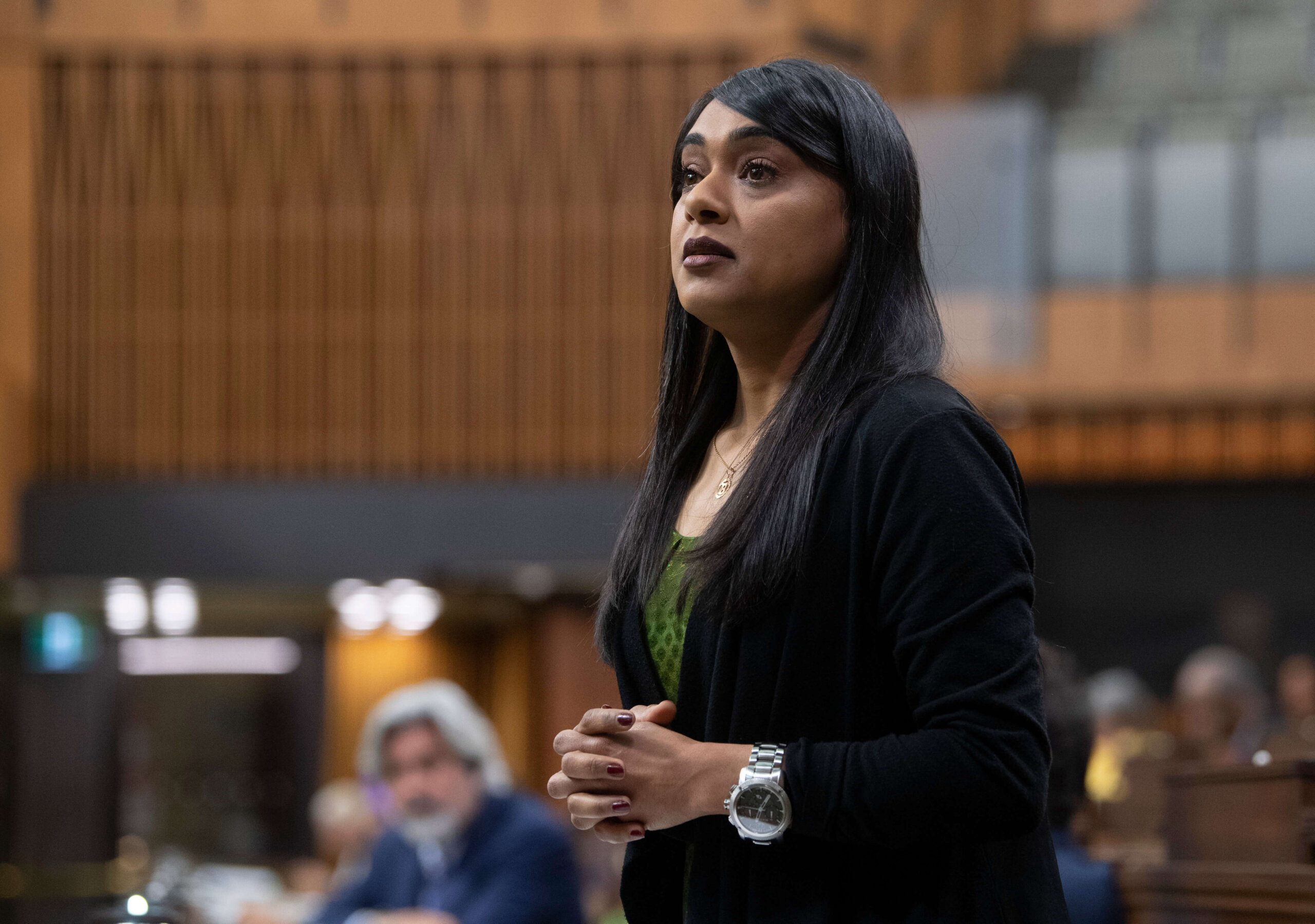Last month, the Liberal Party’s federal budget promised $7.1 million over three years to its LGBTQ2 Secretariat to develop an Action Plan. To better understand what this Action Plan is supposed to look like—given that this is a government that is big on talk and less so on follow-up—I decided to go directly to the source: Minister of Diversity and Inclusion and Youth Bardish Chagger.
Elected in 2015 in Waterloo, Ont., and appointed minister in 2019, Chagger’s role is, in large part, to represent queer and trans communities at the Cabinet table. She is also in charge of the government’s anti-racism strategy and was a central figure in the WE imbroglio as it related to her responsibilities for youth.
Right off the top, Chagger praises her government’s actions when it comes to Canada’s LGBTQ2S+ communities. “We’ve taken steps to work with the communities [and] to really confront and right some of the wrongs of the past as we move forward,” she says. “We had the apology [to gay and lesbian federal employees who were purged from their jobs], we had the official advisor to the prime minister on LGBTQ2 issues and we have a full seat at the Cabinet table as minister of diversity and inclusion and youth, so that we are part of every single decision.
“That’s where the work of the LGBTQ2 Secretariat is so important,” Chagger continues, “because they’re also working with all federal departments and agencies as well as community organizations.”
The Secretariat contributes to the Gender-Based Analysis Plus (GBA+) process, which examines how policies affect women, men and gender-diverse people. Perhaps even more significantly, the role also entails being proactive about issues, as they co-ordinate activities across the federal government and with queer and trans community groups to ensure that the government’s “build back better” financial recovery movement is executed in a way that is “equitable for LGBTQ2 individuals,” Chagger says.
Chagger praises the work the Secretariat has been doing, both in attaining the previously announced $15 million to 76 organizations as part of the LGBTQ2 Community Capacity Fund, but also the $15 million LGBTQ2 Project Fund in this year’s budget. Many activists and even the very organizations receiving the funds, however, say that amount of money is too little for the vital work they do in the community.
“‘We’ve taken steps to confront and right some of the wrongs of the past as we move forward,’ Chagger says.”
As for the $7.1 million over three years for the Secretariat, I asked Chagger: How does that translate into the creation of their Action Plan?
“We released a national survey, which closed on Feb. 28, 2021, and we have been conducting engagement sessions to help us better understand the daily realities and experiences of LGBTQ2 people in Canada, and then fill gaps in four key areas: Health, housing and homelessness and safety and employment,” she says.
She says the survey had 22,000 respondents, which was well above what was expected; that there are currently virtual roundtable conversations happening until June; and that people can submit their views on policies and programs until May 31.
“We really want this to be by community, for community,” Chagger says. “That’s how it will really be relevant, and it provides the government a sense of where people are at, and what the government can do to improve the quality of life for individuals and help them be their true authentic selves.”
Chagger says the plan is to release a report on what they heard from these surveys and consultations later in the spring.
Given that Chagger recognizes the diversity within diversity and that there are many communities within queer and trans communities, I ask whether there would be a distinction-based approach to the Action Plan. Chagger tells me that this has not been pre-determined, but her view is that diversity also includes regions and languages within communities. “It’s a massive intersectional lens,” she notes.
The Action Plan has a three-year funding commitment, so Chagger is looking to the government’s anti-racism strategy, which was informed by Indigenous, Black and other racialized communities. While it is a three-year report, it’s meant to be an evergreen document.
“‘We want people to be able to succeed and be who they are,’ the minister says.”
I asked if this means that issues have to wait for the end of those three years before being addressed—like the gay man who was denied access to medical expense tax credits for assisted reproduction because his surrogate was not his spouse, as reported by iPolitics. Can the Secretariat move ahead in trying to co-ordinate with other government departments on rectifying this discrimination right away?
Chagger didn’t want to comment on that specific case, given that it is headed to the Tax Court of Canada, but she said the feds are taking a whole-of-government approach of working to ensure that they are engaging with all Canadians.
“We’ve become more aware of people’s situations and lived realities, where the work that I’m leading and working with other colleagues on is so much more relevant,” says Chagger. “We want [people] to be able to succeed and be who they are.”
Chagger says that people who have been left on the sidelines, who were afterthoughts or just not considered previously, were front and centre in this year’s budget, which she says was about time.
“As we are building back even better, we’ve confronted the systemic racism and systemic issues that exist in our country, and that includes dismantling some of these systems so that we’re actually mindful of who is helping to inform and build these new systems,” says Chagger. “That’s why these conversations we’re having are more important than ever.”
“The government has so far dragged its feet when it comes to actual structural changes.”
This is the part where I have my doubts: As much as this government talks a good game when it comes to confronting systemic issues like racism, they are also famous for their half-measures and performative declarations. The government has so far dragged its feet when it comes to actual structural changes—whether that’s dealing with sexual misconduct in the military, or promising to end the blood donation ban on men who have sex with men.
Yes, having this Action Plan could be a very good thing if it can identify some of the places where the federal government can have a meaningful impact for queer and trans communities, but large swaths of their target areas—including health, housing, security and employment—fall under the ambit of the provinces, which could really blunt the ability for the federal government to act.
It is great that the federal government recognizes our communities and sees fit to have a minister at the table who is meant to raise our issues. But we also can’t ignore that it took them five years to have a finance minister who would put the value on inclusive growth in the budget, which will remove some of the barriers our communities face. While better late than never, how long will it take them or their successors to start implementing the Action Plan after it’s released three years from now?


 Why you can trust Xtra
Why you can trust Xtra


